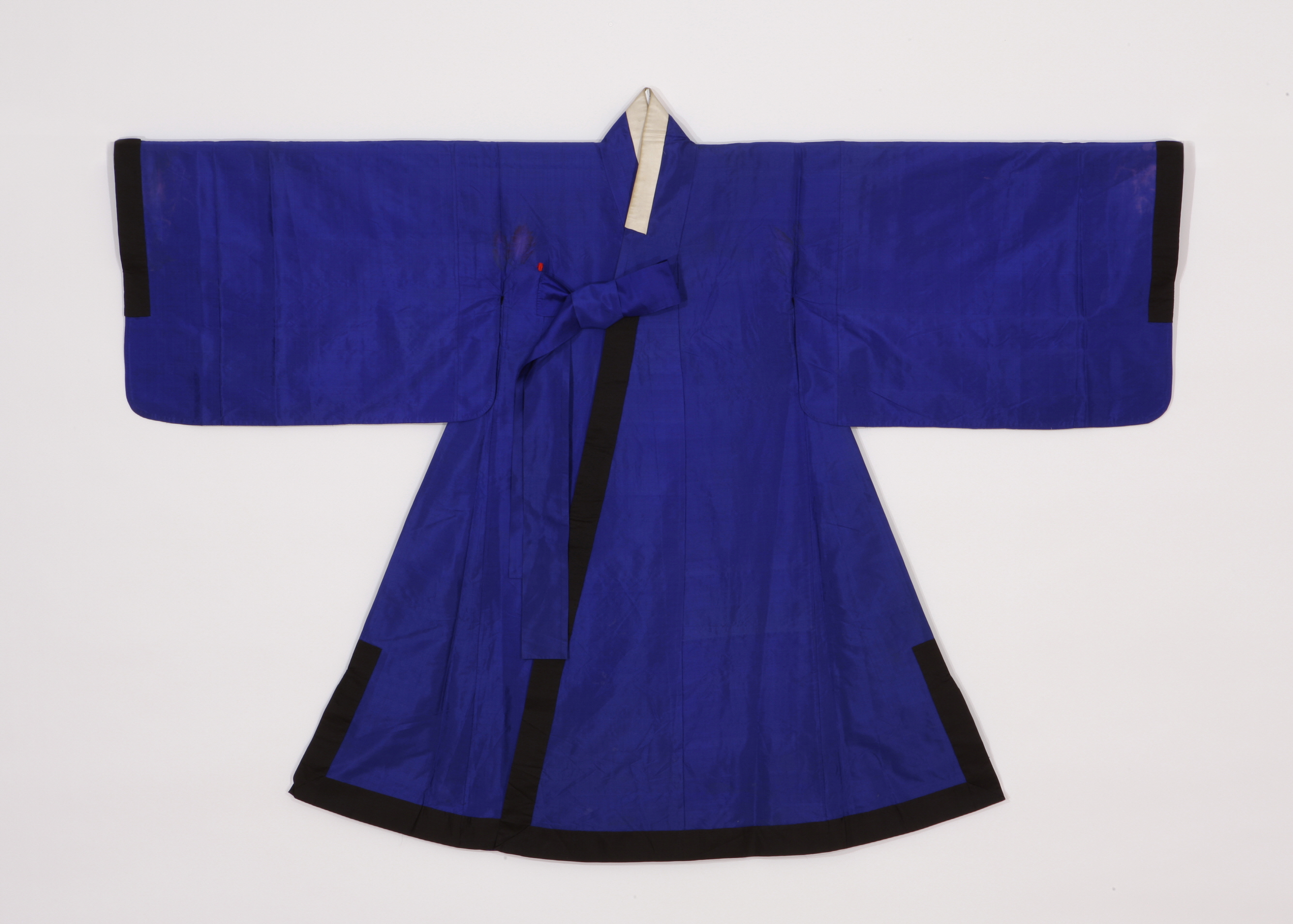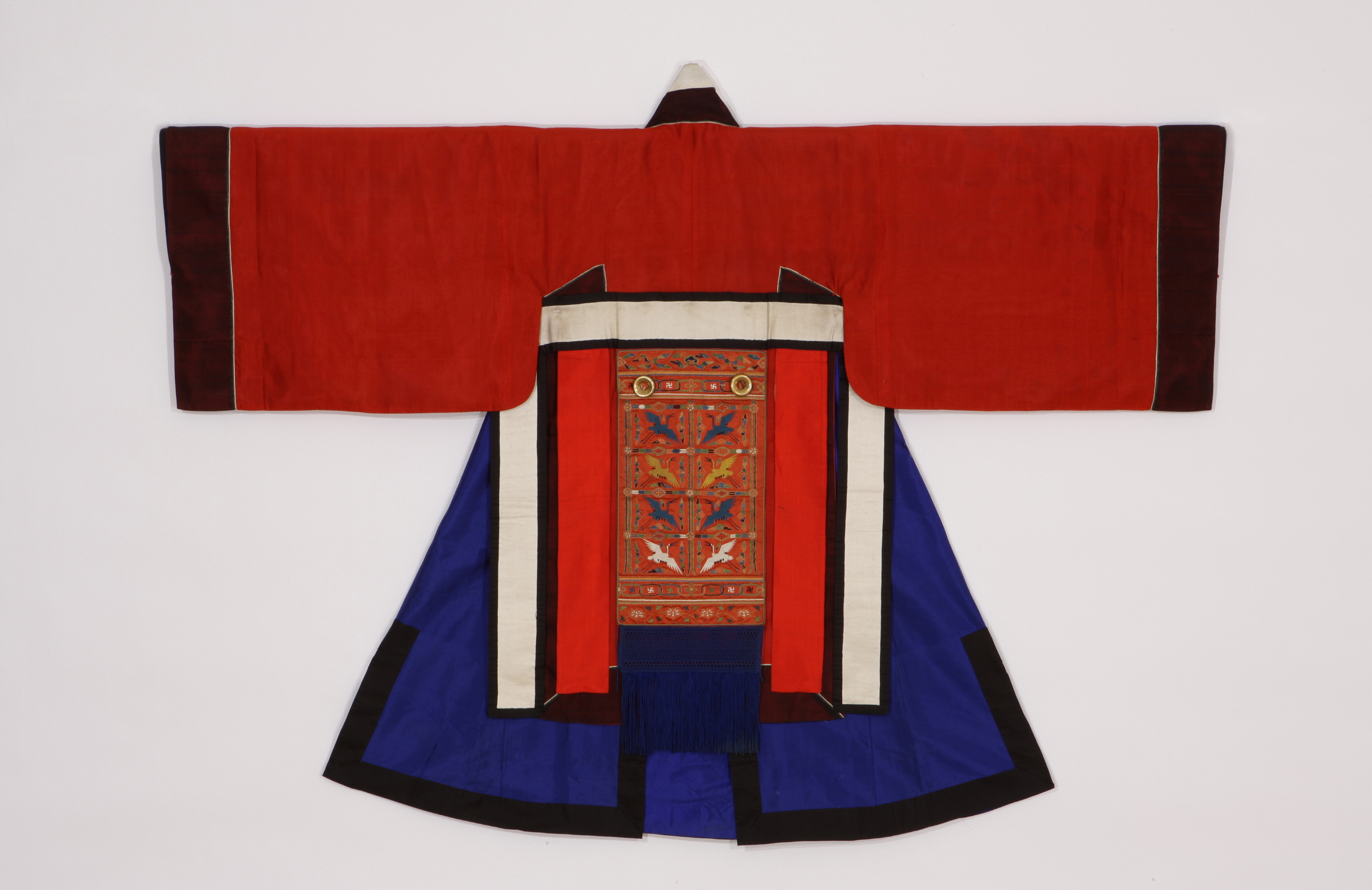Jobok are the court attire that officials wore when offering felicitations to the king on days of celebration or while presenting a document containing their advice. As a geumgwan, which means gilt headgear, is included, jobok are also called geumgwanjobok. The attire consisted of gilt headgear, red robe, red outer skirt, inner silk coat, broad waistband, rank-specific leather belt, lap cover, rear drape, jade ornaments, silk socks, leather shoes, and hand-held tablet. Status was differentiated by the number of ridges on the headgear, the material used for the belt and hand-held tablet, the rear drape pattern, and the color of the jade ornaments.
This blue silk inner robe, which is a designated Important Folklore Material, is attire worn under jeokchoui (red outer robe). It is called cheongchojungdan, since this robe is made of blue cho (thin silk tabby). Gyeongguk daejeon, the National Code of the Joseon Dynasty, contains a record of baekchojungdan (white silk inner robe), but most extant ceremonial attire from the late Joseon Dynasty includes a blue inner robe. The cuffs and hem of this robe are also lined in black, like those of a red outer robe.
The red outer robe (Important Folklore Material No. 62) and blue inner robe (Important Folklore Material No. 61), both part of the collection of Ewha Womans University Museum, are known as costume relics that were originally housed in Changdeokgung Palace. The two items were designated as Important Folklore Materials (now National Folklore Cultural Heritage) in 1979, in recognition of their outstanding preservation and craftsmanship.


